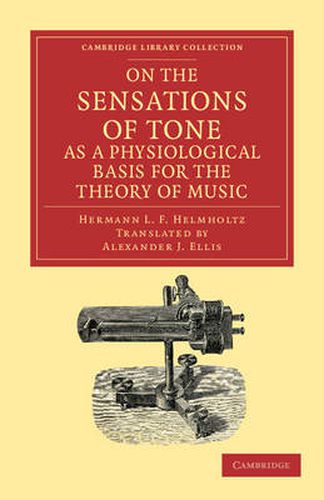Readings Newsletter
Become a Readings Member to make your shopping experience even easier.
Sign in or sign up for free!
You’re not far away from qualifying for FREE standard shipping within Australia
You’ve qualified for FREE standard shipping within Australia
The cart is loading…






Hermann von Helmholtz (1821-94) was a leading scientist who made important contributions to physiology, psychology, physics, philosophy and early neuroscience. Following his foundational work in ophthalmics during the 1850s, he became Professor of Physiology at Heidelberg and, in 1863, published On the Sensations of Tone. This investigation into the physical theory of music remains a central text for the study of physiological acoustics and aesthetics. In it, Helmholtz applies physics, anatomy and physiology. He explains how tones are built from a base tone with upper partial tones, and his later discussions on consonance and musical scales develop this theory and discuss how the ear perceives these tones. His work on consonance and dissonance was of particular interest to composers and musicologists well into the twentieth century. This English translation, published in 1875 from the third German edition, retains the original’s straightforward language, making this classic work accessible to non-specialists.
$9.00 standard shipping within Australia
FREE standard shipping within Australia for orders over $100.00
Express & International shipping calculated at checkout
Hermann von Helmholtz (1821-94) was a leading scientist who made important contributions to physiology, psychology, physics, philosophy and early neuroscience. Following his foundational work in ophthalmics during the 1850s, he became Professor of Physiology at Heidelberg and, in 1863, published On the Sensations of Tone. This investigation into the physical theory of music remains a central text for the study of physiological acoustics and aesthetics. In it, Helmholtz applies physics, anatomy and physiology. He explains how tones are built from a base tone with upper partial tones, and his later discussions on consonance and musical scales develop this theory and discuss how the ear perceives these tones. His work on consonance and dissonance was of particular interest to composers and musicologists well into the twentieth century. This English translation, published in 1875 from the third German edition, retains the original’s straightforward language, making this classic work accessible to non-specialists.